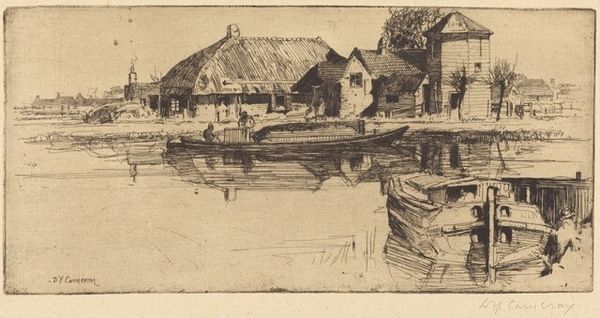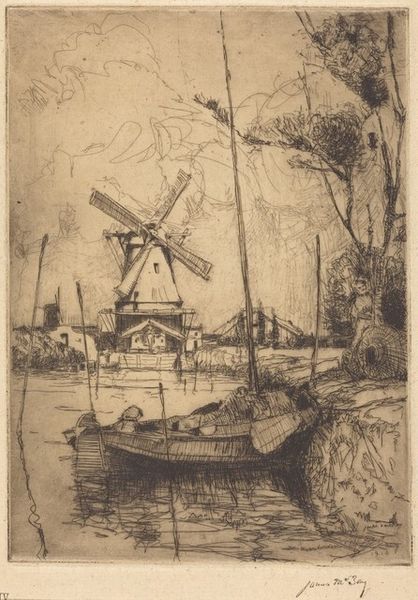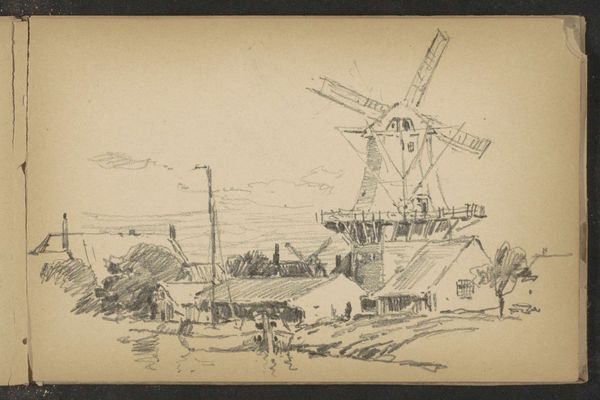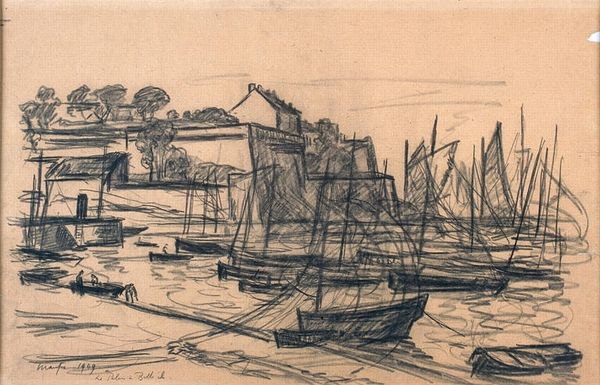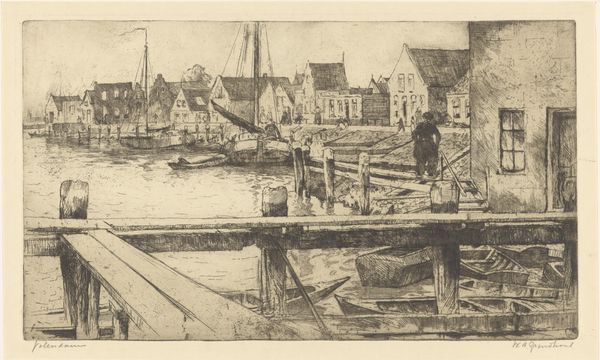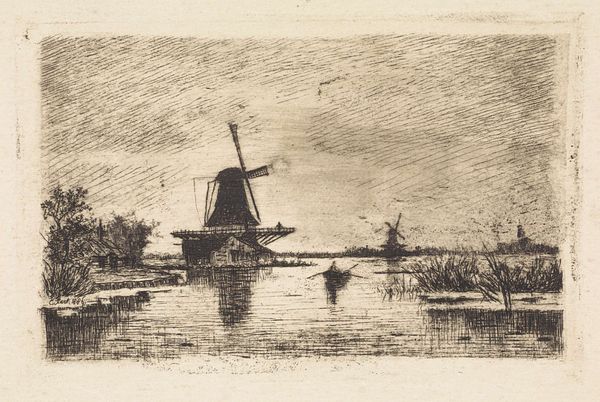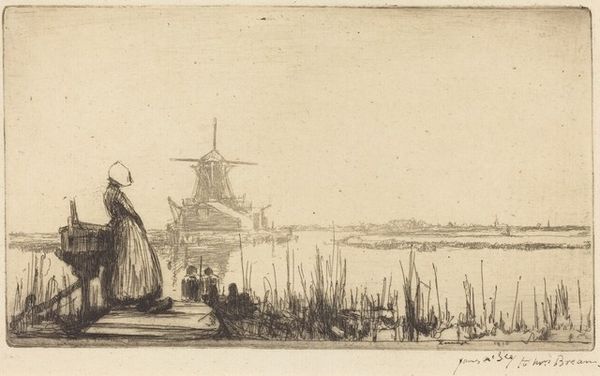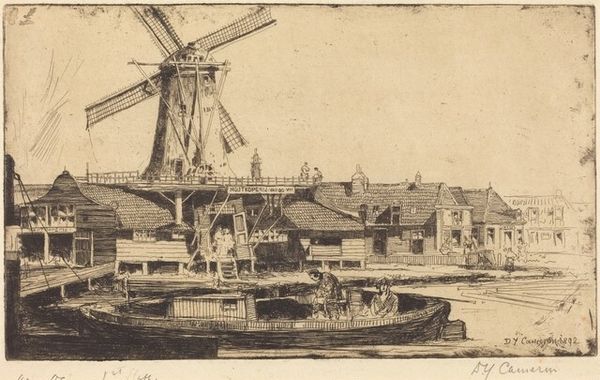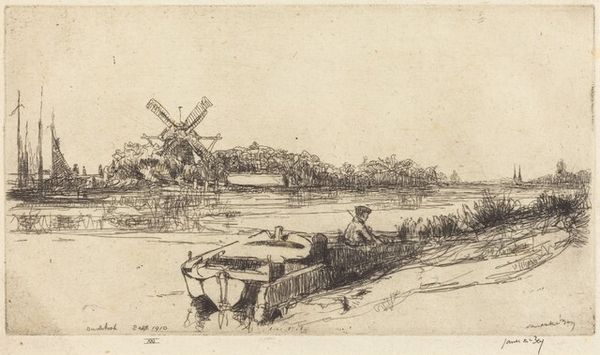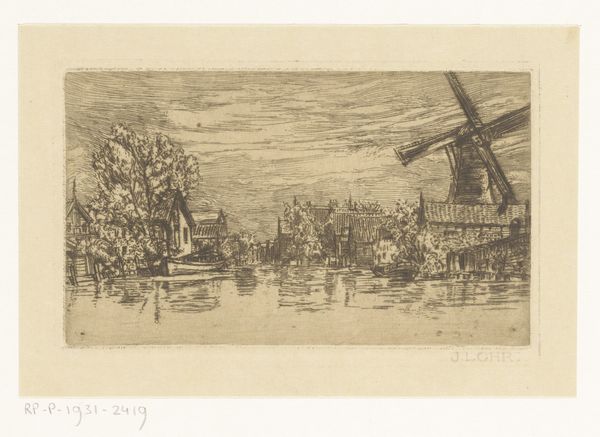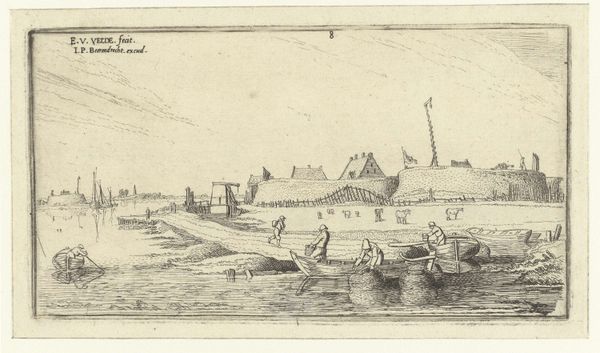
print, etching
# print
#
etching
#
landscape
#
realism
Copyright: National Gallery of Art: CC0 1.0
David Young Cameron created "Zaandam Windmills" using etching, a printmaking technique with a rich history. To make this print, Cameron would have coated a metal plate with a waxy, acid-resistant substance. Then, using a sharp needle, he'd scratch away the coating to expose the metal underneath. The plate is then submerged in acid, which bites into the exposed lines, creating grooves. The image is all in the making. Etching is a reproductive medium, capable of making multiple near-identical images; its advent coincides with the rise of industrial production. The subtle range of tones are achieved by varying the depth and density of etched lines. Look closely, and you can see how Cameron’s skilled mark-making evokes the textures of wood, water, and the rough-hewn sails of the windmills. The scene depicts Zaandam, a Dutch town known for its windmills, which were essential for sawing wood and grinding grain, and a critical element of the early modern economy. In that sense, Cameron’s artistic choices are deeply intertwined with broader social issues of labor, technology and landscape. The making of the image mirrors the making of an economy. By understanding the materials, processes, and context behind an artwork, we can fully appreciate its meaning.
Comments
No comments
Be the first to comment and join the conversation on the ultimate creative platform.
